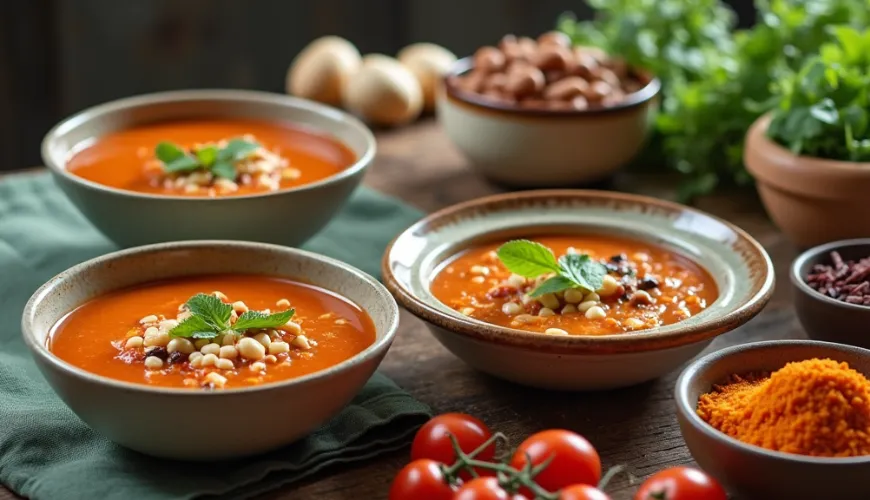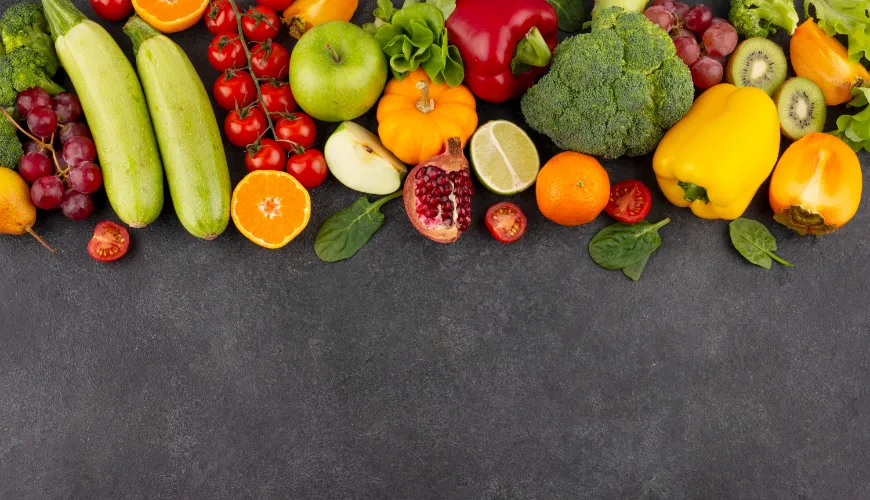
Aztec Soup as an Easy Recipe for a Healthy Dinner

The Secret of Aztec Soup - A Nutritious Classic with the Taste of Ancient Mexico
The aroma of tomatoes, garlic, and cilantro fills the kitchen as hot steam rises slowly from the plate towards the ceiling. It may look like an ordinary bean soup, but beneath the surface lies much more — ancient history, culture, and recipes passed down through generations across the continent. This is the so-called Aztec soup, a dish that awakens the taste buds at first bite and tells the story of an ancient empire at second glance, with roots deep in the Central American jungle.
What is Aztec Soup and Why Does Apetit Know It?
Aztec soup, also known as Aztec tomato soup, is a hearty and filling combination of legumes, vegetables, and aromatic herbs, surprisingly close to what we know today as modern vegan or vegetarian dishes. Its charm lies in its simplicity and simultaneously strong flavor, combining the sweetness of tomatoes, the earthiness of black or red beans, and the typical spiciness of Mexican peppers.
It gained great popularity thanks to modern cookbooks and magazines like the Czech Apetit, which introduced it as an inspiration for a quick and healthy dinner. No wonder — it's a dish that fills you up, rich in proteins and fiber, and can be prepared relatively quickly using basic ingredients that many people usually have at home.
The Story of a Soup That Survived Empires
The Aztecs were one of the most significant civilizations in pre-Columbian America. Their cuisine was based on available ingredients like corn, beans, tomatoes, chili peppers, or chocolate. Meat was often a rarity, appearing in their cuisine only occasionally. Aztec bean soup therefore emerged as the ideal way to utilize basic crops and create a nutritious and durable dish.
Beans were to the Aztecs what bread is to us today. Along with corn, they formed the backbone of the diet and were considered sacred. Unlike the European view of legumes as a side dish or supplement, in Aztec culture, bean soup was a complete meal.
With the arrival of the Spaniards and the emergence of Latin American cuisine, the original Aztec recipes began to mix with European influences. New types of vegetables, spices, cheeses, and meats were added. Nevertheless, Aztec tomato soup retained its basic character — a strong broth of tomatoes, garlic, and herbs, enriched with beans, corn, or even pieces of tortilla.
More Than Just Soup
Today, as more people turn to plant-based diets, Aztec soup is finding a new audience. Its composition is perfectly suited for a healthy lifestyle. Tomatoes are rich in lycopene, a powerful antioxidant that helps protect cells from oxidative stress. Beans contain a high amount of fiber and plant proteins, making them an ideal component for dietary and athletic menus.
Interestingly, the soup is naturally gluten-free and can easily be prepared in lactose-free or vegan versions. If fermented chili pastes or dried peppers are used, it also has a gentle probiotic effect, beneficial for digestion.
And what about its impact on the psyche? According to research published in magazines like Nutrients, Mediterranean and Latin American dietary habits have a positive effect on mental health. The combination of fiber, antioxidants, and healthy fats is said to support a good mood and reduce the risk of depression.
How Does a Taste of Mexico Fit on a Czech Plate
You might wonder if such a dish can find its way into Czech cuisine. The truth is, basic ingredients like tomatoes, beans, cilantro, or garlic are commonly available here as well. The key to an authentic experience, however, is proper seasoning: cumin, smoked paprika, dried chili, or lime juice give the soup the right depth.
For example, Mrs. Jana, a mother of three from Brno, discovered the recipe for Aztec soup in Apetit magazine. Originally, she was looking for a quick vegetarian lunch that the whole family would enjoy. "I tried making it with red beans and corn, garnished it with fresh cilantro, avocado, and a bit of sour cream. The kids had two servings and even asked me to make it again," she says with a smile.
Such an example shows that even historically distant cuisine can be surprisingly accessible — and above all, delicious.
Aztec Soup as an Ecological Choice
At a time when there is increasing talk about the environmental impact of meat consumption, Aztec soup is a clear example of how to eat sustainably without compromising on taste. The production of legumes has a significantly lower carbon footprint compared to meat and uses less water.
Moreover, if you choose to use organic ingredients from local sources, you can be sure that your cooking has a positive impact not only on your health but also on the planet. Eco-focused e-shops like Ferwer offer quality organic beans, dried tomatoes, or fair trade spices that take your homemade recipe to the next level.
And what's another bonus? The leftovers of the soup can be easily stored, frozen, or used as a base for other meals — for instance, as a sauce for grilled vegetables or as a filling for burritos.
Inspiration from Afar That Makes Sense at Home
In today's world, where we have access to recipes from all over the globe, it's easy to forget how many treasures lie hidden in traditional cuisines. Aztec soup is a beautiful example of a dish that appeals with its simplicity, nutritional value, and history. In every spoonful, there's a reflection of respect for nature, reverence for ingredients, and a culture that knew how to make the most out of little.
As Mexican chef Enrique Olvera says: "Truly good food is not about complexity, but about connection — with origin, with nature, and with people around us." And that's exactly why you'll fall in love with Aztec soup — not just for its taste, but for what it represents.

